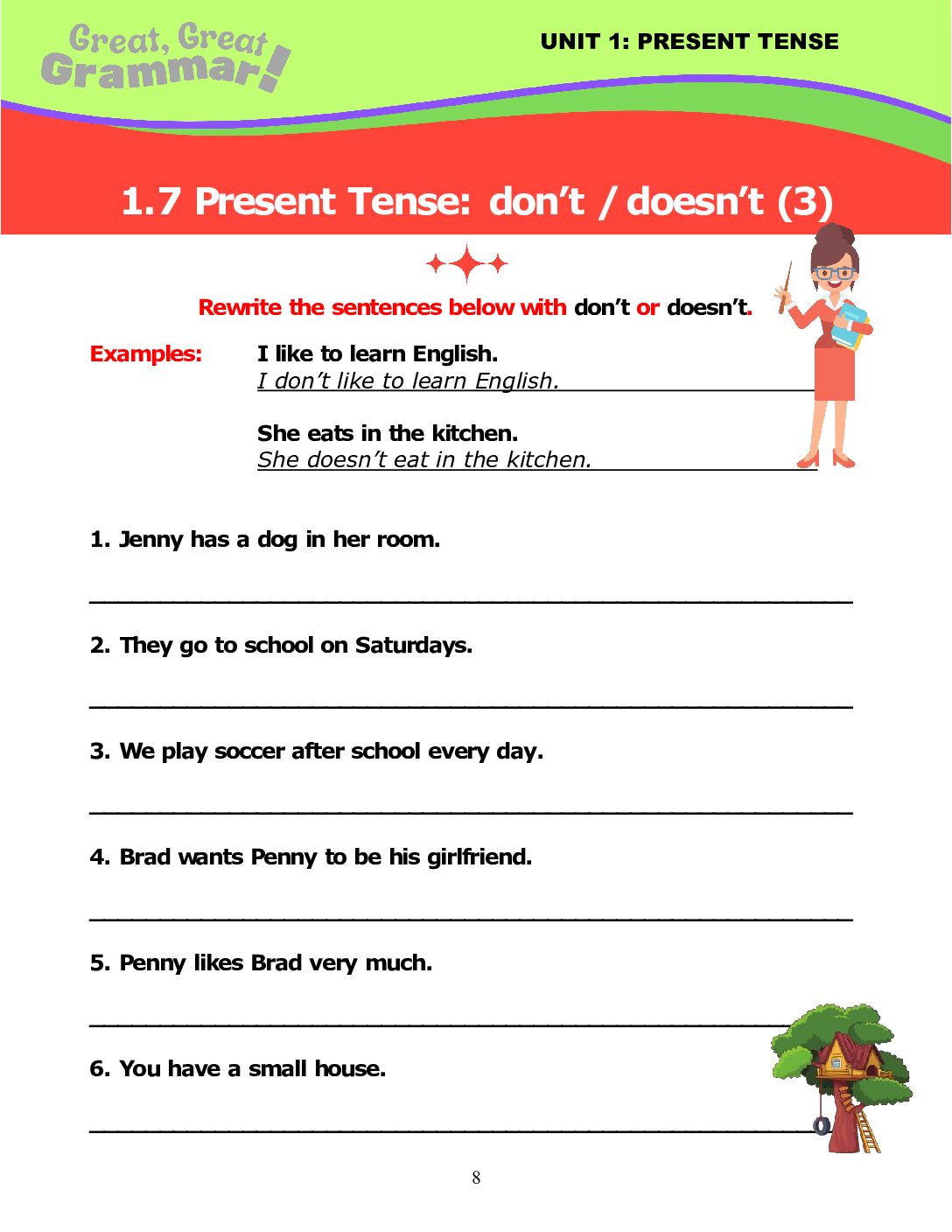In this ESL grammar lesson, students practice rewriting present tense sentences as negative sentences, using “don’t” or “doesn’t.”
ESL Grammar: Using “Don’t” and “Doesn’t” in Negative Sentences
In the present tense, “don’t” is used with the subjects I, you, we, and they. “Doesn’t” is used with the third-person singular subjects he, she, and it.
Examples:
- I don’t like broccoli.
- You don’t have a cat.
- We don’t go to the gym on Sundays.
- They don’t watch TV often.
Examples:
- He doesn’t play soccer.
- She doesn’t read novels.
- It doesn’t work properly.
ESL Grammar: Forming Negative Sentences
- Subject + don’t/doesn’t + base form of the verb
Examples:
- I don’t understand the lesson. (do not understand)
- She doesn’t speak Spanish. (does not speak)
- We don’t eat fast food. (do not eat)
- He doesn’t drive to work. (does not drive)
The English grammar lesson below teaches students how to make negative sentences in the present tense using “don’t” and “doesn’t”, in a clear and simple manner that is easy for beginner English learners to understand. Our series of ESL grammar lessons on subjects and verbs introduce these concepts and reinforce them through helpful and instructive exercises.
This lesson is available for free download, and you can download many more English grammar lessons focusing on basic English tenses (present tense, present continuous tense, past tense, future tense) in our comprehensive, beginner-level ESL grammar textbook Great, Great Grammar! (Book 2: Tenses).

